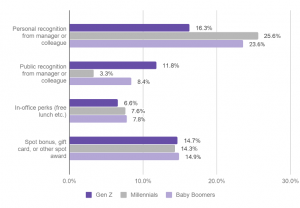Plus, Roku campaigns for Shopify merchants.
MarTech’s daily brief features daily insights, news, tips, and essential bits of wisdom for today’s digital marketer. If you would like to read this before the rest of the internet does, sign up here to get it delivered to your inbox daily.
Good morning, Marketers, how is your CX adapting to changes in customer behavior?
I ask because the customer’s behavior is always changing, especially over the last 18 months. But it also changes because of the evolution in the tech space, and in part because of actions marketers take to engage customers.
Take, for instance, the rapidly changing streaming TV space. The viewers for TV ads can’t stand still. They’re cord-cutting or cord-shaving, switching to tablets then back again to wall-mounted smart screens. Customers try to reach a brand or retailer through an online chat, but if that service breaks down, they’re back on the phone lines in droves.
Data, and especially measurement, are critical in these changing times, and the way to retain customers is to remain flexible, instead of taking for granted that they will remain customers. I’m sure that some of your digital media consumption behaviors have changed in the last 18 months. Mine sure have. How about your customers’?
Chris Wood,
Editor
Cinemark’s personalization strategy
Life changed with the pandemic, and so did a lot of traditional business models and consumer experiences. As one of the Big Three movie theater chains, Cinemark had to reinvent the moviegoer’s journey to ensure safe health practices and meet higher competition from in-home streaming platforms.
To attract more fans to their theaters, Cinemark had to make the experience even more memorable, and also make their interactions with customers relevant and useful. Data made both these goals achievable by helping to increase the level of personalization in Cinemark’s engagement.
“For the moviegoing experience, traditionally, we think of that as stadium seating, a bucket of popcorn and sticky floors, right?” said Ray Valencia, Cinemark’s Director of Digital Customer Experience. “But for consumers, their expectations have increased significantly, and now it’s all about experience. It’s very experiential. They’re looking for big, bright screens, for surround sound and lounge seating and elevated food and drink experiences. So our objective really on the digital side is to elevate that experience to be on par with the in-theater experience.
He added, “Our digital is the front door to the customer experience, and we want it to be inviting and personalized for each of our customer, and also streamlined so it’s very easy for them to purchase with us and makes them want to come back.”
Meeting future customers where they are in the movie business means reaching out beyond the theater to engage customers through digital channels. And doing this in a personalized way is important in getting people’s attention. Valencia said the aim of his team is to make Cinemark the Amazon of movie theaters — digital-first while reducing friction points in the shopping experience.
New Roku app on the way for Shopify SMBs
Roku announced the introduction of a new app within the Shopify app store that will enable Shopify merchants to buy, build and measure campaigns across the Roku streaming platform. The Roku app will become available ahead of the 2021 holiday season, according to the company.
As the first streaming platform available to Shopify merchants, the app is set to open up SMBs to affordable TV campaigns. The app allows business owners to set up, monitor and execute campaigns on their own, based on the parameters of their ad budget.
Advertisers download the Roku app from the Shopify App Store, pick their audience and ad budget, and set timing and duration. From there, they upload their creative and have a campaign ready to go. Roku reaches tens of millions of U.S. households.
In recent years, Roku has been a preferred streaming ad platform for many direct-to-consumer brands. TV streaming spend in Roku’s OneView Ad Platform nearly tripled year-over-year in Q2 2021.
Why we care. A low barrier to entry on the publisher side means that there are a lot of opportunities on streaming for advertisers. On an OTT platform like Roku, for instance, viewers can watch premium services like Disney+, or ad-supported free services like Pluto TV, which includes over 100+ channels.
With so much inventory, SMBs with smaller budgets can run ads in front of families in their living rooms. The easy app experience further enables the democratization of streaming advertising, and will increase the slice of the overall TV pie that OTT/CTV has been building.
CDPs and data management
The idea of a single view of the customer has been on marketers’ wish lists for years. But disruption caused by the global COVID-19 pandemic has raised interest in precisely the types of solutions that CDPs deliver, which includes that single-view of the customer. With pandemic concerns spurring the movement of customer interactions – both B2B and B2C – to digital channels, marketers are increasingly interested in technologies that collect data from those interactions, unify them, deliver insights and enable campaign orchestration.
Data collection and maintenance is a core CDP function. All CDPs provide a central database that collects and integrates personally identifiable customer data across the enterprise.cFrom there, however, CDPs vary in their abilities to manage the following:
- Data ingestion capabilities: CDPs use various mechanisms to ingest the data that goes into the unified customer profile — mobile SDKs, APIs, Webhooks or built-in connectors to other platforms. Identity resolution: The platform “stitches” together customer data points, such as email addresses, phone numbers, first-party cookies and purchase data, from various channels matching them to create a single customer profile.
- Online/offline data: The platform leverages identity resolution or an identity graph to stitch together behaviors in order to create a unified profile.
- Data hygiene: The platform enables users to clean and standardize customer records.
- Structured/unstructured data: CDPs differ in their capabilities to manage unstructured data (i.e., social media feeds, product photos, barcodes), which may comprise up to 80% of all data by 2025, according to IDG.
The importance of each of these data management capabilities will depend on a particular organization’s business goals, and whether it has a significant mobile presence, direct mail budget or brick-and-mortar stores and/or agents.
Quote of the day
“Why would you invest time, energy and resources if you don’t know if the work that you’re doing actually provides a customer benefit? And even more so, how can you prioritize that work if you don’t understand the value that your work is driving? Testing control experiments allows us to measure the impact that we’re driving across all digital touchpoints.” Ray Valencia, Director of Digital Customer Experience, Cinemark. (See his full presentation at MarTech here.)
The post Big screen personalization and CX: Thursday’s daily brief appeared first on MarTech.
MarTech(32)




